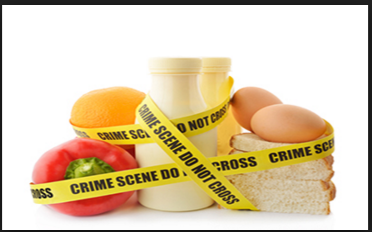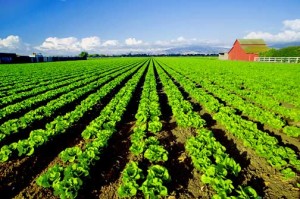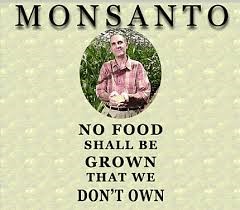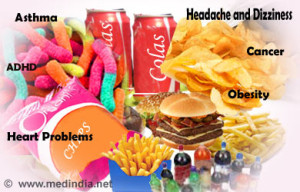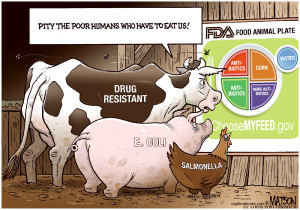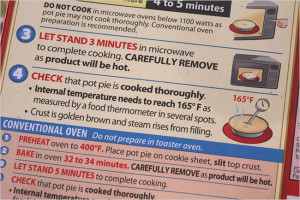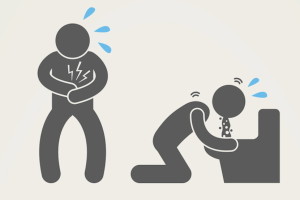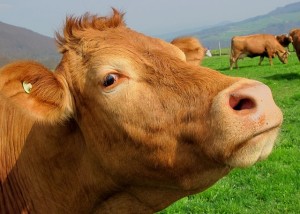When I was younger, my dad and I used to go on camping trips all of the time. All fathers and sons have things they do together, and being from Southern California, it wasn’t too far of a drive up the coast to find a nice campground where we could relax, get away from society, and spend quality time. One of my most vivid memories from these trips was that my dad would always instill in me the idea of leaving the campsite cleaner and nicer than when we arrived. Much of the time, we would get to the site and there would be beer cans, trash, and other unsavory items around the campsite that were left by the rude people staying before us. But, it was important to my dad to leave the site in a cleaner and more respectable condition than when we arrived. Even if the campsite wasn’t too dirty to begin with, we always found a way to make it nicer for the next people who were to arrive. I tell this story because I feel that it relates to the current state of our country, and my mentality towards it. When I eventually pass on and leave this Earth, I want to make sure that I did all I can to leave it in better condition and in better hands than when I arrived on it. Unfortunately, I feel quite strongly that a Donald Trump presidency would do damage to the country, and possibly the world as a whole, and that is why I feel that we have an obligation to openly and honestly discuss and bring to light his past speech and behavior in order to better educate voters in hopes of them being informed on who they may be voting to lead our country into the future, during these tumultuous times.
Up until about a year ago, last June to be exact, I didn’t give Donald Trump much thought at all. Obviously, like most people, I knew who he was. He’s an extremely wealthy businessman who made billions in the real estate market, as well as had a successful reality TV show. Besides that, however, he had nothing to do with my life, and thus, didn’t take up too much space in my mind. That all changed, however, when he decided to announce his candidacy for President of the United States. Almost immediately upon announcing, controversy ensued, and has followed ever since, based on some of the language and rhetoric he has used. He has become a household name, and although we do live in a country where free speech is protected, I am mightily concerned about a Trump presidency and the ramifications it would have on future generations, based not only on much of the rhetoric that has been used by Mr. Trump over the course of the last year, but also his actions and language throughout the course of his entire adult life.
Because of the fact that most people didn’t give Mr. Trump the time of day up until he decided to run for President, they are unaware of the fact that his nasty and arguably racist rhetoric has shaped much of his adult life. Before I began the process of researching this man and his past transgressions for this article, I also thought that his worrisome thoughts and views were only over the past year. However, I have learned that is false. This article will not only discuss the comments he has made over the course of the past year that are cause for concern, but also his actions and comments over the course of his entire lifetime that should make people think twice before voting for him. I feel like it should be the job and obligation of all Americans to make decisions not only based on themselves, but based on how it will affect their children, and their children’s children. As a result, Donald Trump and his proposed policies should raise eyebrows and strike a nerve inside the heart and soul of every American. In many ways, this country was founded on the principles of inclusion, and built on the backs of immigrants and other “undesirables” who wished to escape oppression and create a better life for themselves and their families, and during a time in which we have a candidate wanting to abort that lifestyle and abort that sense of inclusion, as a nation, we shall not succumb to the fear he is trying to instill in us.
As mentioned before, it is my deepest and most sincere wish that the reader gain a better understanding of who Donald Trump is both as a person, and a presidential candidate. I hate to continue to drone on and on with this repetitive line, but it is so important to be informed about who one is voting for. In that same vein, I will chronologically detail the past and current wrongdoings of Mr. Trump and discuss the things he has both said and done throughout his life that leave many, including myself, seriously questioning his ability to be the leader of not only this country, but the free world.
Starting all the way back in 1973, Donald and his father Fred Trump were building housing complexes all across New York City. They became the subjects of a US federal investigation, based on the notion that they had been discriminating against minorities who wished to purchase apartments in those complexes. Throughout the course of the investigation, it was found that Trump employees had been using coded messages to signify the race, or ethnicity, of the potential applicants. Perhaps the most notorious mark that was used was the letter “C”, to show that the applicant was colored. As part of a sting operation inside this larger governmental investigation, there was a white woman, as well as a black woman, who both went to the front desk at one of these complexes asking to purchase a home for them and their families. Not surprisingly, they were given different answers. According to the investigators, the white woman was treated with dignity and was helped, while the black woman was told that there was no space for her and her family. At the end of the investigation, there was not a substantial enough amount of evidence to bring any criminal charges down upon the Trump Organization. Donald did mention this in his autobiography, but definitely downplayed the significance of it. He said that “the government was not able to prove its case and we paid a small settlement without admitting any guilt.” While it is true that the government was not able to prove its case, it is quite unsettling and frankly, quite alarming with the evidence that they were able to find.
If we fast forward in time 18 years, to the year 1991, we come across a man named John O’Donnell, who was the president of the Trump Plaza Hotel and Casino. When interviewing Donald for a book that he was writing during the early 90’s, according to O’Donnell, Mr. Trump said that “Laziness is a trait in blacks. I truly believe that.” Now, because of the fact that there is no audio recording, it is simply conjecture and speculation as to whether or not Donald did in fact say that quote. However, it is still quite alarming that in the year 2016, about 150 years after slavery was outlawed, we still have a presidential frontrunner who is being accused of holding these pernicious beliefs. Like he does with many people who disagree with him and say something negative about him, Donald has called Mr. O’Donnell a “loser”, but it still doesn’t take away from the fact that their seems to be a pattern that follows Donald when it comes to his hurtful rhetoric and shameful actions.
Up to this point, we have raised concerns about Donald’s candidacy for President based on two of the more notable times in his life that caused speculation about his racist views and actions. Now, we will fast forward to the present day, and discuss both his words and his actions over the course of the past year. During this time, he has said and done many things, covering a wide range of ethnic groups, that not only are hurtful and wrong, but give credence to the idea that both instances I mentioned in the above paragraphs could very well be true.
The three main groups that Mr. Trump has targeted over the course of his campaign have been African Americans, Muslims and Mexicans. Now, lets work backwards and discuss how he has treated these groups since announcing his run for President. In his opening speech, he viciously attacked Mexicans and immigration as a whole. Not only did he call Mexicans rapists and murderers, but he also stated his goal to deport all illegal immigrants that are currently here, without giving thought to the repercussions that would have on families. Now, I am from Los Angeles. I know firsthand that most Mexicans and Latin Americans, whether legal or not, are simply hardworking people who wish to keep their noses clean and work to support their families. Now, are there murderers and rapists among them? Sure, probably some. However, generalizations like the ones Mr. Trump makes when it comes to Mexicans are not right, and they are part of the problem that we have with racial stereotyping in our country to this very day. In addition, he has gone after Muslims repeatedly with his rhetoric, again making generalizations that are both disrespectful and hurtful, but also not true. Throughout his campaign, he has proposed torturing the families of Islamic terrorists, and said that any soldier not willing to follow those orders would have no choice. He has also discussed patrolling Muslim neighborhoods at a more increased frequency than other neighborhoods, he has stated that Muslims in New Jersey were cheering on September 11, 2001 when the World Trade Center was being brought down, and he has said that as President, he would stop the influx of Syrian refugees into the country. While his supporters say that he is simply doing this to keep us safe, there is no doubt that his vicious stereotypes and generalizations towards Muslims have offended many people, and much like his comments about Mexicans, are simply untrue.
African Americans have had a history in our country of being subjected to lower standards of living, as well as higher incarceration rates and higher rates of police brutality. In a time when we should be figuring out how to quell their anger and figure out a way to create a more peaceful and accepting society for them, Donald Trump has seemed to ignite a fire and anger within the black community. One of the most notable examples of his disrespect for their community came when he was endorsed by the Ku Klux Klan. Instead of disavowing any white supremacist group, because of their treatment towards African Americans and other minorities, Donald decided instead to wait until he “got more information”, and then after much media scrutiny, finally decided to disavow. In addition, another instance of his disrespect towards African Americans happened at a Donald Trump rally. When a black protestor was punched by a white protestor, chaos ensued. Now, instead of using his voice to calm the collective nerves of black people across the country, and show that he cares about them, Mr. Trump instead offered to pay the legal fees of the man who punched the protestor. Not only is that juvenile and ridiculous, but it isn’t very presidential.
Right now, the future of our country is at stake. Just like my dad taught me, it is right to leave things in better condition than when you arrived. That applied to campsites when I was younger, and it applies to our country now. We are at a crossroads in our country’s future, and its important to recognize that the rhetoric and behavior that has been displayed by Donald Trump throughout this campaign, and throughout the course of his life is alarming, frightening, and isn’t right for this country. As a result, I caution everyone to take this article seriously and to do your own research before voting for this man next November.
 Let’s not beat around the bush, America. We’re a pretty fat country. We love sports, but we have a pizza and wings by our side while we’re chillin’ on the couch watching them. We’re so fat, actually, that according to the Food Research and Action Center , more than
Let’s not beat around the bush, America. We’re a pretty fat country. We love sports, but we have a pizza and wings by our side while we’re chillin’ on the couch watching them. We’re so fat, actually, that according to the Food Research and Action Center , more than 


